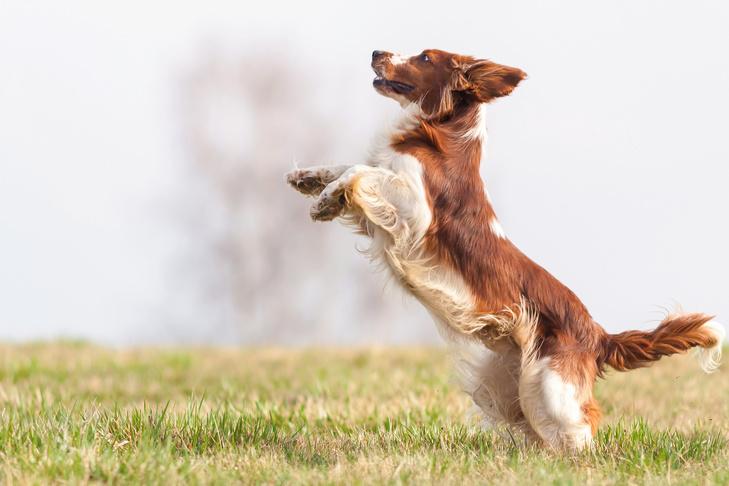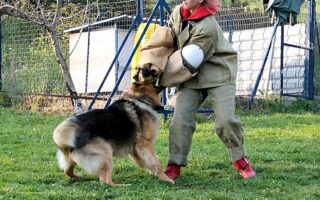Title: Taming the Tumble: How to Curb Your Pup’s Jumping Habits
The boundless joy of a puppy can be a heartwarming spectacle—tail wagging, eyes sparkling with excitement, and an eagerness to greet the world. But that exuberance can sometimes translate into an enthusiastic leap that catches unsuspecting visitors off guard or turns a leisurely stroll into an acrobatic performance. While jumping up may be a natural expression of a puppy’s affection and energy, it can quickly become an unwelcome habit that many pet owners seek to curtail. In this article, we will explore effective strategies for managing this typical canine behavior, ensuring that your four-legged friend learns to greet the world with all the joy they bring, minus the airborne antics. With patience, consistency, and the right techniques, we can harness the thrill of those puppy greetings into more graceful encounters, allowing both pup and human to enjoy their time together.
Table of Contents
- Understanding the Root Causes of Puppy Jumping Behavior
- Effective Training Techniques to Curb Jumping Habits
- Establishing Consistent Boundaries for Your Puppy
- Reinforcing Positive Behavior: Alternatives to Jumping
- Q&A
- Closing Remarks
Understanding the Root Causes of Puppy Jumping Behavior
Puppy jumping is often a natural expression of excitement and affection. Understanding why your furry friend bounces up in delight is essential for addressing the behavior effectively. Key factors that contribute to this exuberance include:
- Curiosity: Puppies are innately curious creatures, eager to explore their surroundings and engage with those around them.
- Social Interaction: For many puppies, jumping is a way to seek attention and reinforce social bonds with humans and other pets.
- Energy Levels: High energy and lack of physical or mental stimulation can lead to jumping as an outlet for pent-up exuberance.
Moreover, puppies may not distinguish between acceptable and unacceptable behavior, especially when they receive positive reinforcement through laughter or attention during their jumping antics. This misunderstanding makes it crucial to correct the behavior early on. It’s also pertinent to recognize that:
| Reason for Jumping | Suggested Solution |
|---|---|
| Excitement | Redirect focus with training commands. |
| Seeking Attention | Teach ‘sit’ before greeting. |
| Excess Energy | Increase daily exercise and playtime. |
Effective Training Techniques to Curb Jumping Habits
When it comes to teaching your puppy not to jump, consistency and positive reinforcement are key. Start by establishing clear rules for your puppy’s behavior and ensure that everyone in your household is on the same page. When your puppy approaches you and exhibits jumping behavior, gently turn your back and ignore them. This will teach them that jumping does not yield attention. Reinforce calm behavior by offering praise and treats when they greet you without jumping. Make sure to reward them immediately to create a strong association with the desired behavior.
Another effective technique involves redirecting your puppy’s energy. Incorporate structured play sessions and exercise into their daily routine to help expend excess energy. You can also use commands like “sit” or “down” to give them a better understanding of acceptable behaviors. Consider creating a simple training table to track their progress with various commands:
| Command | Consistency | Progress |
|---|---|---|
| Jump | Ignored 90% | Reduced in frequency |
| Sit | Practiced Daily | Improving |
| Down | 5 times a day | 80% compliance |
By using these techniques together, you can create a harmonious environment where your puppy learns that remaining grounded is rewarded, helping them transition away from their jumping habits.
Establishing Consistent Boundaries for Your Puppy
Creating a structured environment for your puppy is essential in curbing unwelcome behaviors like jumping up. Consistency is the key; every family member should reinforce the same rules. For instance, if you decide that your puppy is not allowed on the furniture, ensure everyone follows suit. This will help establish clear expectations. Positive reinforcement also plays a vital role. When your puppy remains grounded, reward them with praise or treats, reinforcing that stillness is more rewarding than excitement.
To further assist in reinforcing boundaries, consider the following approaches:
- Training Sessions: Dedicate time each day for short training sessions, emphasizing commands like “sit” or “stay.” This provides mental stimulation while teaching essential behaviors.
- Redirect Attention: If your puppy tends to jump, redirect their energy. Use toys to engage them in play before they can jump up.
- Leashing: When expecting visitors, keep your puppy on a leash initially. This gives you control and the chance to reward calm behaviors.
| Boundary Setting Strategy | Benefits |
|---|---|
| Consistent Commands | Establishes clear communication |
| Positive Reinforcement | Encourages desired behavior |
| Regular Training | Strengthens obedience and focus |
Reinforcing Positive Behavior: Alternatives to Jumping
Redirecting your puppy’s energy into more favorable behaviors can be a game-changer in preventing jumping. Instead of allowing your furry friend to leap up to greet people, teach them to perform an alternative action instead. Practicing sit or down commands provides an excellent way for your puppy to stay grounded while engaging with others. When they greet guests or family members without jumping, immediately reward them with praise or even treats. This positive reinforcement will not only affirm their new behavior but also create a calm atmosphere during introductions.
In addition to verbal commands, you can incorporate engaging toys and activities into your training routine. Consider the following options to keep your puppy entertained while avoiding jumping:
- Interactive toys: Use puzzle toys that dispense treats as your puppy plays, which can keep them focused on the toy and away from jumping.
- Training sessions: Dedicate time to practice agility exercises or basic commands that require focus and energy, helping them to channel their excitement positively.
- Short walks: Regular walks can burn off excess energy, leading to a calmer demeanor at home.
| Behavior | Positive Alternative |
| Jumping on people | Sit or Down command |
| Begging for attention | Engage with a toy |
| Excited barking | Reward with silent toy play |
Q&A
Q&A: How to Stop Puppy Jumping Up
Q1: Why does my puppy jump up on people?
A: Puppies are naturally inclined to jump as a form of communication and excitement. They’re eager to greet you and others, wanting to share their joy. This behavior is often their way of seeking attention, affection, or simply expressing their exuberance!
Q2: Is jumping up something I should be concerned about?
A: While it’s a normal puppy behavior, jumping can become bothersome or even rude if not addressed. It’s crucial to teach your puppy more acceptable ways to greet people to ensure everyone enjoys their company without the risk of being knocked over.
Q3: When should I start training my puppy not to jump?
A: It’s never too early to start! As soon as you bring your puppy home, begin teaching them polite greetings. Consistency is key, so establish this habit early to set them up for success as they grow.
Q4: What are some effective techniques to discourage jumping?
A: There are several strategies you can employ:
- Ignore the Jumping: Turn your back and withhold attention when your puppy jumps. Wait until they have all four paws on the ground before giving them affection.
- Use Commands: Teach commands like “sit” or “down” and reward your puppy for obeying them instead of jumping up.
- Reward Calm Behavior: Whenever your puppy stays calm and keeps their paws on the ground, reward them with treats or praise as positive reinforcement.
Q5: How do I handle visitors who encourage my puppy to jump?
A: Inform your visitors about your training approach. Ask them to refrain from greeting your puppy until they are calm. Encourage them to ignore jumping and only offer attention when your puppy has settled down.
Q6: What if my puppy continues to jump despite my efforts?
A: Consistency is crucial. If your puppy persists in jumping, consider enrolling in a training class or working with a professional dog trainer who can offer personalized guidance and techniques tailored to your puppy’s needs.
Q7: Is it possible to train an older puppy or adult dog not to jump?
A: Absolutely! Although it may take a bit more time and patience, older dogs can learn new behaviors. The techniques remain the same: be consistent, use positive reinforcement, and remain patient as your dog adjusts to the new expectations.
Q8: What are some signs my puppy is learning to stop jumping?
A: You’ll start to notice your puppy greeting people while keeping their paws on the ground more often. They may also look to you for guidance before approaching someone, indicating they are learning the desired behavior.
Q9: Can I ever allow my puppy to jump up?
A: Yes! It can be acceptable to let your puppy jump in certain situations, like during playtime at home or with friends who don’t mind. Just be sure to maintain boundaries and reinforce polite greetings in other contexts.
Q10: What’s the most important thing to remember when training my puppy?
A: Patience and consistency are your best allies. Teaching your puppy new behaviors takes time, but with positive reinforcement and a calm approach, you’ll foster a lifelong habit of polite greetings without jumping. Enjoy the journey of training and bonding with your furry friend!
Closing Remarks
teaching your puppy not to jump up is a journey that requires patience, consistency, and understanding. By employing positive reinforcement techniques, setting clear boundaries, and providing alternatives for greeting behavior, you can help your furry friend learn more appropriate ways to express their excitement. Remember, this is not just about curbing a behavior; it’s about fostering a deeper connection and enhancing communication between you and your canine companion. As your pup grows and matures, the skills you instill today will pave the way for a well-mannered adult dog who knows how to greet the world with love—and all four paws on the ground. So take a deep breath, stay committed, and enjoy the process; after all, the bonds you create during this training phase are the stepping stones to a harmonious life together.



